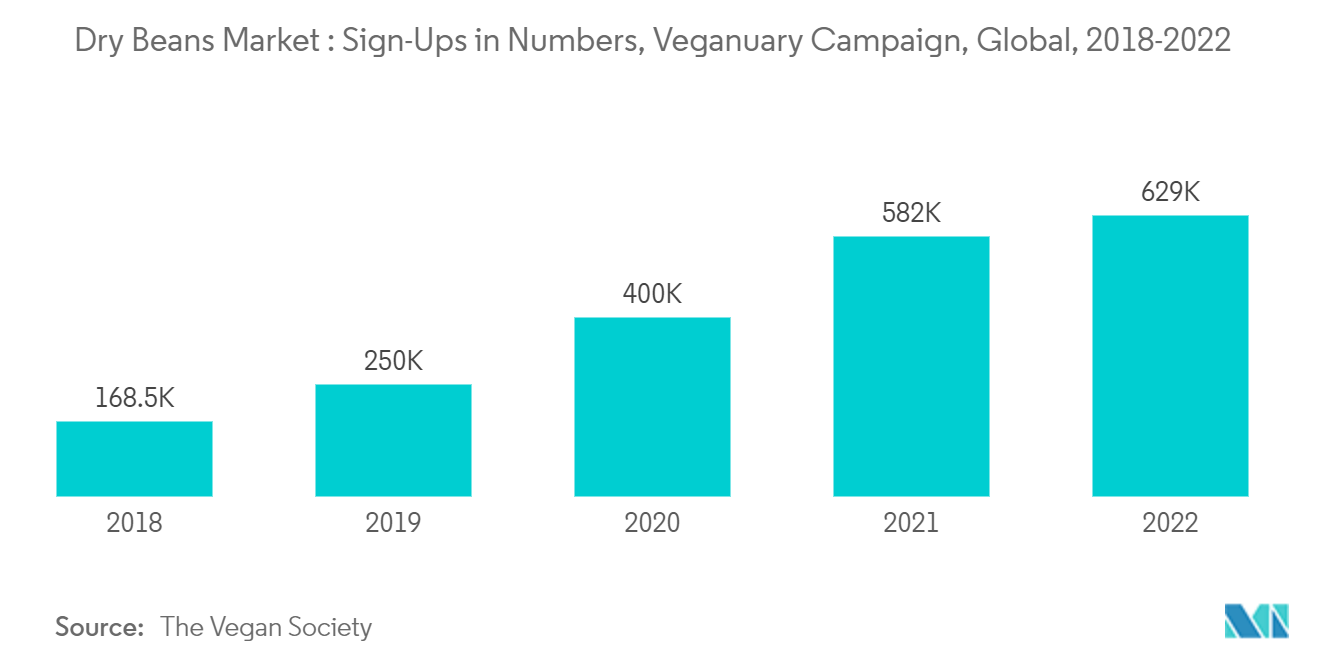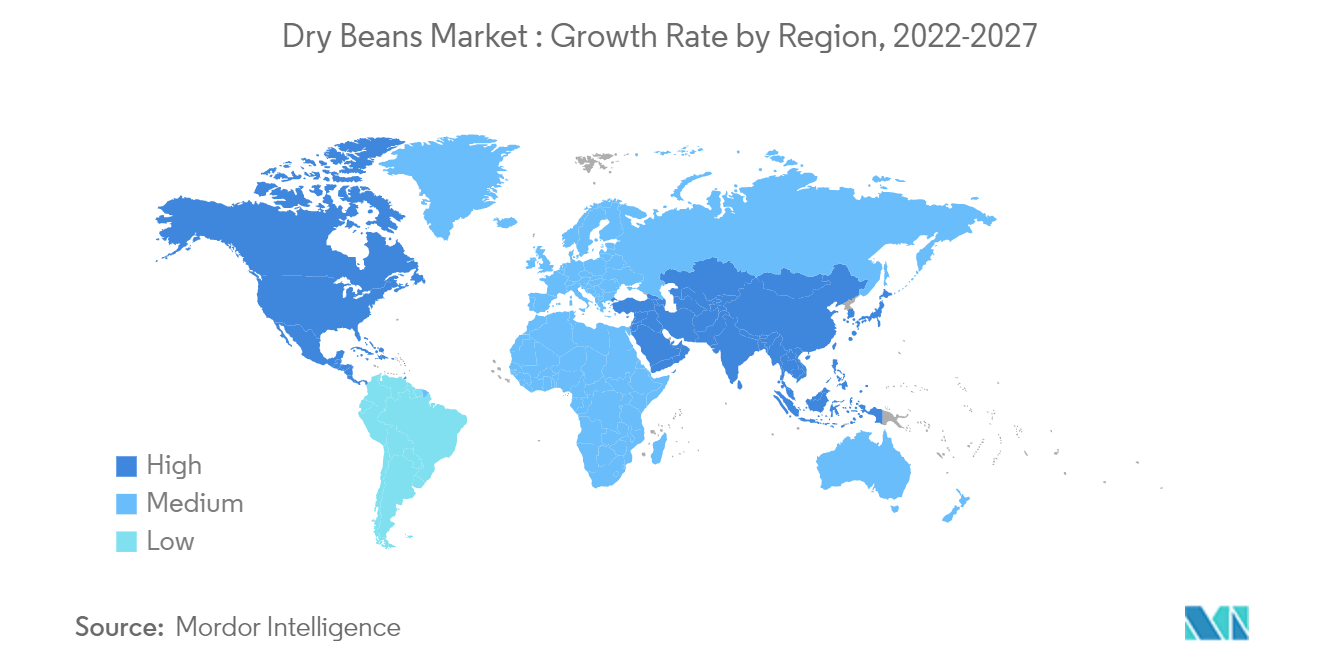Market Trends of Dry Beans Industry
This section covers the major market trends shaping the Dry Beans Market according to our research experts:
Increasing Inclination Toward Vegan Diet
Food consumption patterns are changing rapidly. In the last few years, the number of people following the animal-free diet has significantly increased, which is one of the major drivers for the dry beans industry. Dried beans have a high content of fibers and proteins, which makes them ideal for people with diabetes and those who want to reduce their meat consumption.
Over the years, there has been an increasing trend of veganism in Europe and the United States, which is spreading across the world. Based on the most recent United Nations database, in 2022, there are approximately 80 million people around the globe who follow veganism. The number is increasing, which is fueling the demand for the crops like dry beans in the market as they are rich in a number of important micronutrients, including potassium, magnesium, folate, iron, and zinc, and are important sources of protein in vegan diets.
Moreover, people are focused on plant-based diets, which has been the reason for the higher consumption of dry beans. The negative impact of animal protein, which is associated with high cholesterol levels, fat, and calories, increases the risk of cardiac diseases, high blood sugar levels, and obesity, is an important factor for people to turn towards vegan sources of protein. Therefore, increasing the adoption of plant-based protein, owing to the awareness of the benefits offered by a plant-based protein among consumers in the potential market, is one of the major factors spurring the demand for dry beans across the world.

Asia-Pacific is Dominating the Market in Terms of Production
Asia Pacific is likely to hold a significant share of the global market of dried beans. The growing area under the cultivation of beans is expected to be a favorable factor for market growth within the region. Myanmar is one of the largest producers and exporters of dry beans in Asia-Pacific. After Myanmar, India is one of the major producers of dry beans globally. The country has expanded its production tremendously over the past 4 years. According to FAO statistics, the domestic production of dry beans in India, in 2019 was around 5,310,000 metric ton, which increased and reached 5,460,000 metric ton in 2020. The other producers include Myanmar with 3,053.0 thousand metric ton, and China with 1,281.9 thousand metric ton of production volume in 2020. Dry beans are majorly grown in the Indian states, including Gujarat, Jharkhand, Tamil Nadu, Karnataka, Uttar Pradesh, Andhra Pradesh, West Bengal, Bihar, Madhya Pradesh, and Chhattisgarh. The production is further expected to enhance during the forecast period with the increasing domestic demand.
Furthermore, one of the principal factors responsible for the highest production of beans in Asia is the need to use land instead of keeping it idle after rice cultivation. Beans can be planted at the beginning of the winter season and can thrive on the leftover moisture of the rainy season, as they do not require additional artificial irrigation facilities in the absence of rain, which makes the cultivation cost-effective with no additional allocation of resources required for cultivation. Thus, the growth of the region is being primarily driven by the presence of the agri-land suitable to cultivate dry beans in the Asia major countries, which will drive the market growth during the forecast period.


